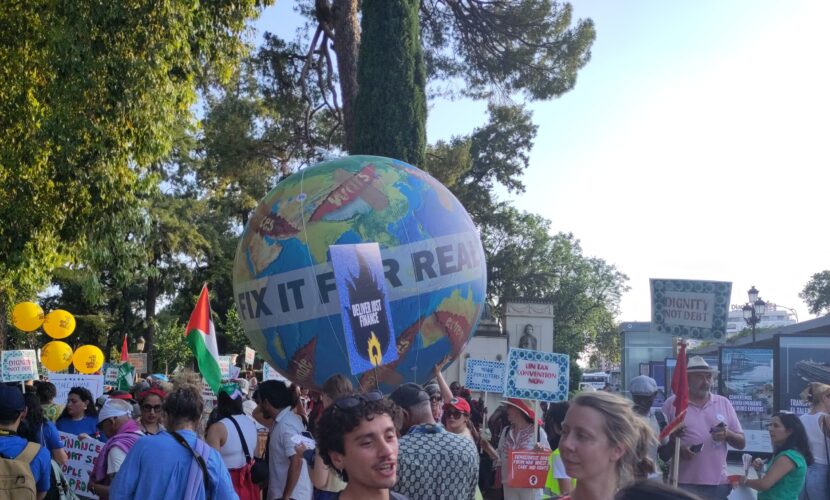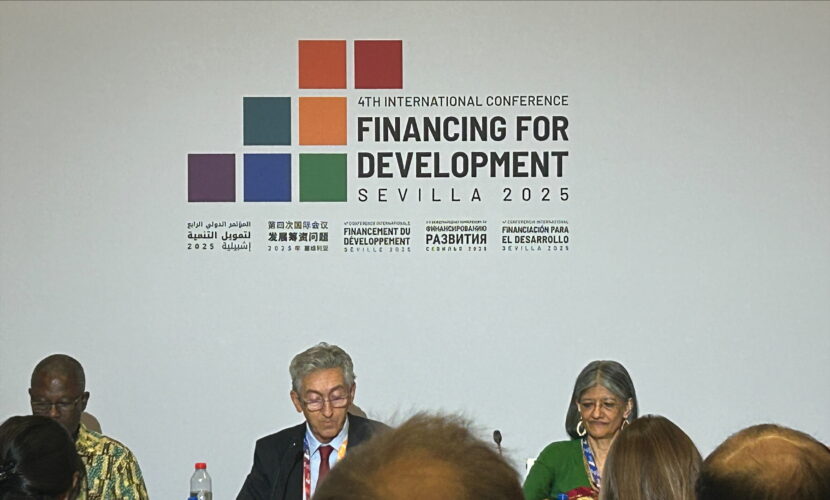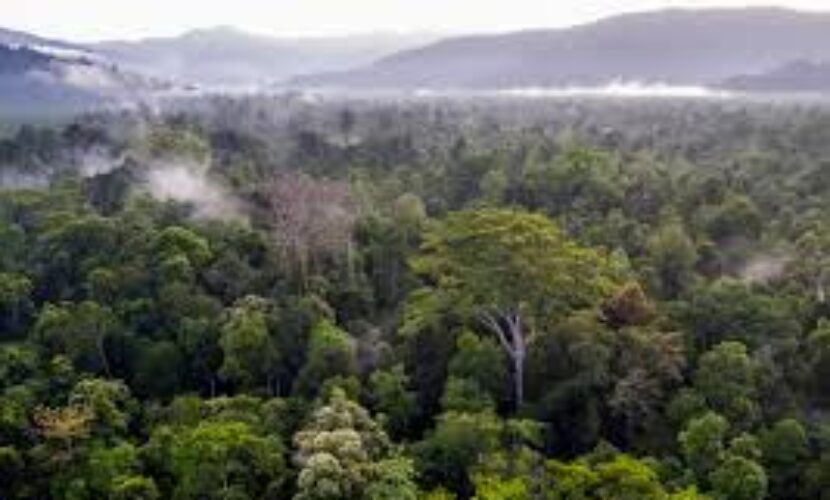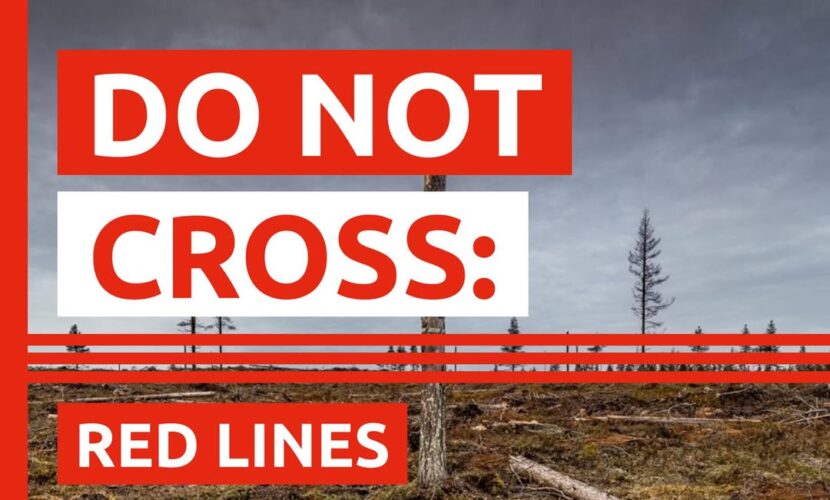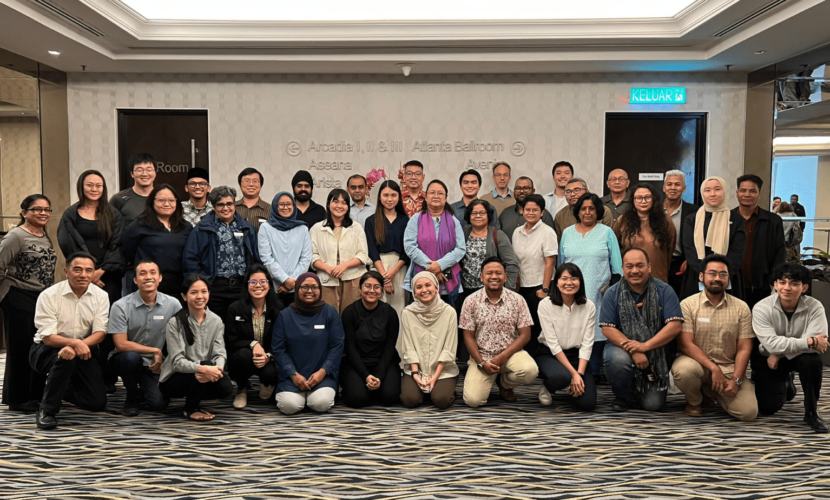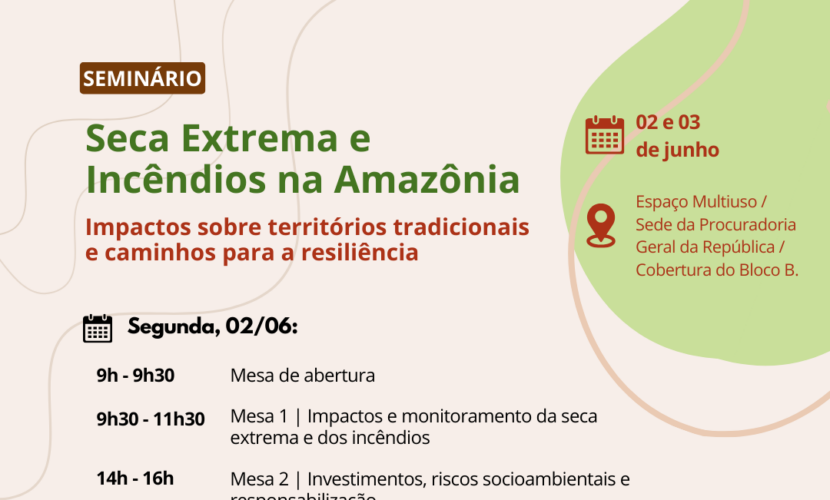Notícias
Acordo de dívida com desmatadora BrasilAgro coloca em questão o compromisso verde do UBS

- Despite its sustainability rhetoric, Swiss bank UBS has financed controversial land developer BrasilAgro with a bond issuance that raised $45.5 million. The operation is part of a broader strategy to profit from Brazilian agribusiness, including the consolidation of a joint venture with the Brazilian bank.
- BrasilAgro is allegedly responsible deforesting nearly 22,000 hectares (54,000 acres) of native vegetation in its farms in Brazil’s Cerrado region and was fined $1.1 million by Brazil’s environmental protection agency for illegal deforestation.
- The financial product chosen to raise money for BrasilAgro, a CRA or “agribusiness receivable certificate,” is backed by future harvests and has been a favored tool used to raise record amounts of money from the capital markets for Brazilian agribusiness firms over the past several years.
- Although there are hopes that CRAs could support sustainable practices in Brazil, financial data reviewed by Mongabay show that the largest issuances in recent months have all been for highly controversial companies such as BrasilAgro, JBS and Minerva.
A profit of over 400%. That’s what BrasilAgro got from one of its early business ventures. The company bought the Cremaq farm in 2006, paying 42 million reais ($8 million) for a 32,700-hectare (80,800-acre) farm in the state of Piauí, in Brazil’s northeast.
It then spent another 22.6 million reais ($4.3 million) on starting soy cultivation to encourage potential buyers. The farm was split in two and sold between 2013 and 2015 for a combined 307.4 million reais ($58.4 million). But the consequence of this profiteering was deforestation, loss of groundwater, and the expulsion of local communities in the Cerrado, one of the world’s most significant biodiversity hotspots.
“I define it as a company that transforms native or underused lands into financial assets,” says Rodrigo Cavalcanti do Nascimento, a geography Ph.D. who investigated BrasilAgro for his thesis.
In May, Swiss bank UBS acted as a coordinator in a financial operation that raised 240 million reais ($45.5 million) for the company. BrasilAgro is just one piece of UBS’s larger strategy to profit from Brazilian agribusiness. To achieve its goal, it partnered with Banco do Brasil, the world’s largest agribusiness financier, to create a joint venture: UBS BB Investment Bank.

Clearing forests and evicting communities
On its website, BrasilAgro describes itself as “one of the largest Brazilian companies in [terms of] the amount of arable land,” with 22 farms across Brazil, Paraguay and Bolivia. The core of its business is the “identification, acquisition, development and exploration of rural properties with high valorization potential,” which it sells “once we judge that the value of the rural properties delivers the expected return.”
The “development” arm of the business, according to Nascimento, is focused on clearing and burning native vegetation, preparing the land for crops like soy, sugarcane, corn or pasture for cattle, and creating infrastructure like warehouses and internal roads. Before the land is resold, these goods are traded through commodities firms like Bunge, Cargill, Amaggi, Glencore and the meat processor JBS.
Last month, reporting by Agência Pública revealed how investors, including U.S. pension funds and an Argentine agribusiness giant, may be linked to illegal land deals and deforestation in the Cerrado region through their stakes in BrasilAgro.
Most of BrasilAgro’s properties are in the Matopiba region, an agricultural frontier that was opened for exploitation in the 1980s and spans the border region between the states of Maranhão, Tocantins, Piauí and Bahia in Brazil’s north and northeast. All 10 of the municipalities with the highest deforestation rates in the Cerrado were in Matopiba in 2021, according to INPE, the federal body that monitors deforestation in Brazil.
Nearly half of Brazil’s Cerrado savanna, which is home to the springs of eight out of Brazil’s 12 river basins, including the Amazon, has already been lost to crops and pasture.
BrasilAgro is accused by government bodies and nonprofit organizations of sharing responsibility for the deterioration of the Cerrado. Chain Reaction Research, a commodities-focused think tank, says the firm is responsible for the deforestation of nearly 22,000 hectares (54,000 acres) of native vegetation from 2012-2017. BrasilAgro was also fined 5.9 million reais ($1.1 million) by the environmental protection agency, IBAMA, for illegal deforestation in a protected area in the state of Goiás.
Nascimento visited three BrasilAgro farms in the state of Bahia in 2018. Near the Chaparral farm, in Correntina municipality, he found the Capão do Modesto community, which was expelled from its original home and living in precarious conditions. “These companies indirectly impact these communities by stimulating other companies to buy areas and by promoting the concentration of the land in the hands of a few people,” he told Mongabay in a video call.
“Near one of BrasilAgro’s properties there were some springs, and now you see total desertification. You see giant central pivots, which is equipment to irrigate crops, sucking the water table.”
Land as a financial asset
BrasilAgro was created in 2005 and thrived amid the rapid financialization of Brazil’s land after the 2008 economic crisis. “Although commodities prices were falling in Brazil after the crisis, the price of land didn’t stop rising. It happened because companies are demanding areas to invest and not necessarily to produce something,” says Fábio Pitta, a professor at the University of São Paulo (USP) who for years has been researching the role of foreign investors in the destruction of the Cerrado.
Despite its name, BrasilAgro is controlled by the Argentinian agribusiness group Cresud, which owns about 33% of its shares. This fact has yielded another judicial problem for the company as Brazilian law restricts the ownership of land by foreign entities.
According to Nascimento, Cresud pioneered the “land as a financial asset” model in South America in the 1990s. In Brazil, it partnered with Elie Horn, one of the country’s most influential urban real estate businessmen and the owner of Cyrela, a residential real estate developer and builder.
When BrasilAgro listed on SãoPaulo’s B3 stock exchange in 2006, it provided a glimpse of how promising the future of the business would become.
“At that time, Brasilagro had no assets [land] yet. It only had an idea, which was the commercialization and exploitation of agricultural land. Nevertheless, the IPO raised more than 550 million reais,” Nascimento says, or about $105 million at the time. Six years after the company first traded its stock on the market, in 2012, the company would list on the New York Stock Exchange, becoming the first Brazilian agricultural company on Wall Street.
In a statement to Mongabay, BrasilAgro said that “all [of the] company’s operations are carried out within the law” and that “any statement different from this being libelous and defamatory.” According to the company, the Chain Reaction Research report doesn’t state that the deforestation inside its farms was illegal. Regarding the IBAMA lawsuit, BrasilAgro said “it does not relate to activities performed by the company” and that a lower court has determined the cancelation of the fine and of the infraction notice. IBAMA has appealed the decision.

Loosened sustainability requirements
BrasilAgro’s deal was preceded by a loosening of UBS’s environmental exclusion criteria. Until the end of April, the rule was that all financed companies in the soy sector must be certified by the Roundtable on Responsible Soy (RTRS) and “not be subject to unresolved public criticism by the RTRS.” But on May 1, UBS published new criteria stating that companies did not have to be certified anymore, but only “credibly commit to RTRS or a similar standard.” Two days after the total dilution of the UBS exclusion criteria for soy financing, on May 3, the financing of BrasilAgro, which is not part of the RTRS, took place.
The deal with BrasilAgro also stands out for the financial tool used. The CRA (Agribusiness Receivable Certificate) is a so-called structured financial product: in this case, a security that speculatively bets on future commodity prices. Normally, it would mean the investor doesn’t know how much they will get at the end of the investment. The CRA, however, is structured in such a way that investors receive regular remuneration in addition to their initial input. That sounds complicated, but is “nothing more than [a piece of] paper that says, ‘I am lending money to a company that is going to produce something and pay me back later with interest,’” according to USP’s Pitta.
Take, for example, a farmer or a cooperative that sells its harvest in advance, even before the seed is sown. They issue a promise of delivery on their future harvest, and with that guarantee, they go to a securitizing company that creates — usually with the help of an investment bank — a CRA. This bond is sold in the capital markets to investors, so the farmer doesn’t have to wait for the harvest to receive their money.
That would be a “classic” CRA case. Brazilian companies, however, are making innovations.
BrasilAgro, for example, has backed its CRAs with debentures, which are debts of its own. “It’s pretty crazy if you go and think that you are backing a debt with another debt. But this is very common in the agribusiness sector. It swaps a more expensive debt for a cheaper debt, because the CRA is tax-exempt, the debenture is not. The CRA will attract more investors,” Pitta says.
Carlos Augusto Lopes, the CEO of Uqbar, a Brazilian structured finance think tank, says CRAs could be a good financing option for a group of small farmers. The reality, however, is that it has been used mostly by multinational companies.
“Who in fact is taking advantage of this mechanism today are the big companies through debentures, but we expect this market to grow in the small and medium [agriculture]”, he told Mongabay in a video call.
In the case of companies like BrasilAgro, the goal of issuing CRAs is to free up cash to buy up more land so the process can be repeated. “They expand their properties with the promise of selling it in the future,” Nascimento says.
Accumulating debts on top of debts is a matter of survival for agribusiness companies. Since their contracts are based on the commodity price in the futures market, when the price rises, the debt rises too. According to Pitta, it is a “race for debt,” the result of which is the constant need to exploit new areas for crops.
“The company ends up contracting a debt that, in order to pay, it needs to produce a larger quantity of soybeans than it could at the time it contracted the debt. But it only works while prices are rising. After the bubble bursts, he says, “everybody is in debt and many are bankrupt.”
Bright future for an obscure instrument
CRAs were first issued in 2009, but have been growing in popularity in the last few years. One factor is the strength of Brazilian agribusiness, which accounted for more than a quarter of the national GDP in 2020 and was one of the few economic areas that grew during the pandemic. At the same time, public banks — which were always the main financiers of the sector — are no longer coping with the demand. “We have to find alternative sources of financing, and the capital market is a natural way out,” Augusto Lopes says.
There were a record number of CRAs issued last year in Brazil, amounting to 15.81 billion ($3 billion), and it looks as if this record will be broken again this year, having already reached two-thirds of the 2020 record by July. The future looks bright, even more so since Congress approved a bill in April last year that allowed the issuance of CRAs in dollars, making them more attractive to foreign investors. “We are very optimistic about this market, it should keep growing strongly in the next years,” Augusto Lopes says.
According to a review of financial data on the Refinitiv platform, CRAs are mostly coordinated by Brazilian banks. Of the non-Brazilian banks, however, UBS is by far the most active. Since its joint venture with Banco do Brasil started last October, it has coordinated the issuance of seven CRAs with a total value of almost 2 billion ($380 million). Other clients included the bioenergy company Tereos Açucar e Energia and the soy giant Grupo Scheffer.
UBS Group did not respond to Mongabay’s questions about BrasilAgro’s environmental impact or about its role in backing CRAs. Regarding its ESG standards, the organization said it will “continuously review and adapt our guidelines and standards where we see need.”
Risk of greenwashing
Both WWF Brazil and Climatebonds see big opportunities in CRAs to support sustainable agribusiness in Brazil. They point to the capacity of CRAs to link Brazilian agribusiness to international investors, which in turn has “created an enormous demand for green bonds.”
The reality, however, looks different. Not only was the deal with BrasilAgro highly controversial, but a closer look at the CRAs issued in the last several months shows that the largest came mainly from the beef sector, with meatpackers JBS, Minerva and Marfrig topping the list. Together the three largest meatpackers in Brazil, they handle more than 40% of the slaughters of all cattle in the Amazon. According to Imazon, a research institute, JBS is exposed to the most deforestation risk in its supply chain, with Marfrig coming in fifth and Minerva tenth.
While UBS partner bank Banco do Brasil has coordinated two large CRAs for JBS in recent months, UBS BB helped to coordinate a CRA for Marfrig on July 15, valued at about $200 million.
Gerard Rijk, an equity analyst at Chain Reaction Research and Profundo, a Netherlands-based sustainability consultancy, says that although it is possible to issue CRAs as green or sustainable bonds, most CRAs have nothing to do with sustainability. “UBS is particularly strong in connecting international private and institutional investors to new investment opportunities,” he says. “And still many of these financers are mostly interested in high yields, not primarily in a positive impact on environmental, social or governance issues.”

This article was originally published by Mongabay
